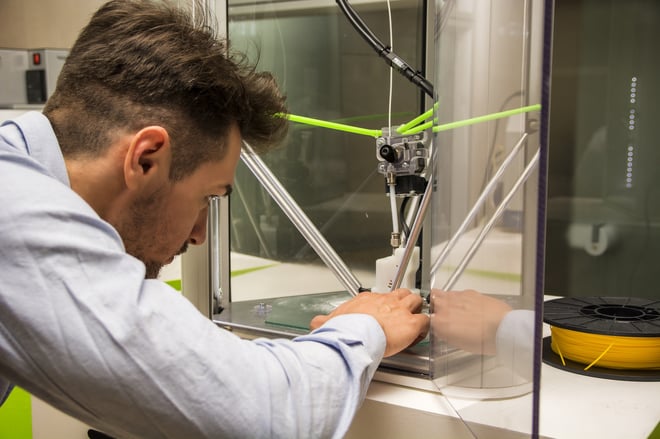
From advancements that have helped the industry for over 40 years to the latest cutting-edge innovations, there are a number of interesting plastic injection technologies out there that could be used to bring your prototype into production.
Below are six technologies that are helping today’s injection molding companies produce parts more rapidly and with higher quality. The more you know, the more prepared you’ll be to request such a technology when it comes time to select your injection molding partner!
6 Types Of Injection Molding Technology
1. Thin Wall Molding
Thin wall molding is an injection molding technology that achieves a plastic part with a very thin wall. It is often used in test apparatuses, electronics, vessels, tubes, and other enclosures. Plastic injection molders who do thin wall molding have to consider every aspect of the part design, mold design, and processing in detail to ensure that the thin wall geometry will hold up without quality issues. Here at Micron, we use a sophisticated vision system to examine each completed part to ensure that no cracks have appeared.
2. Gas-assisted Injection Molding
The trouble with any thick plastic injection-molded part is that it runs the risk of distortion as it cools. Gas-assisted injection molding helps solve this issue by shooting gas into a plastic material-filled injection mold. This allows the plastic on the outside of the mold to maintain a smooth and finished appearance while the inside stays porous or hollow. This not only keeps the part from deforming during the cooling stage, but also lessens the cost of the part (as you’re using less material).
3. Metal Injection Molding
Plastic isn’t the only thing that can be injection molded—metal can as well. This new technology is substantially more expensive than plastic injection molding and usually serves a niche market. The cell phone market, for example, sometimes uses metal injection molding to shield the cellular electronics from radio or microwaves.
4. Liquid Silicone Injection Molding
The majority of plastic injection molding is thermoset, meaning cold material is injected into an extremely hot mold to create a part. This process cures the part so it can never be melted again. But if you need a part to withstand very high temperatures or chemical agents—as you might with certain medical devices or car parts—you may need thermoplastic injection molding, which frequently uses liquid silicone.
5. 3D Printing
3D printing is a notable injection molding technology because of the role it plays in prototyping an injection molded part. Here at Micron, we create a 3D-printed prototype of a client’s part before we move the design to production. This allows us to discuss potential improvements in more depth than we could while reviewing an online rendering, for example. It’s also worth noting that 3D printing can be used to print actual injection molds using plastic or metal. Currently, the available 3D printing technology does not enable us to print with the narrow part tolerances required in an injection mold—but we imagine it may in the future.
6. Unique Material Formulations
While this isn’t a plastic injection “technology” in the traditional sense, the use of unique material formulations does advance molding capabilities. Injection molding companies may, for example, use a carbon or mineral filler, a blowing agent, and a lubricity additive to add certain properties to a part. For example, here at Micron, we have run 40% carbon-filled ABS (Acrylonitrile Butadiene Styrene) to achieve a degree of electrical conductivity in a plastic stud or sensor. The temperature of the mold and the plastic material are both important when adding a filler, additive, and blowing agent, so we are constantly refining our process to achieve the best advantage for these unique materials.
If you have any additional questions about what injection molding technology your part may require, we’d love to help out.
Simply fill out the form below or contact us and we’ll get in touch!



